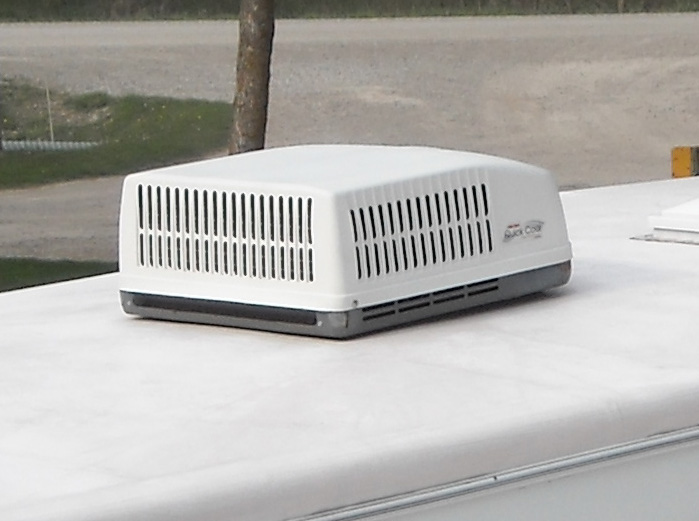The amp draw of an RV air conditioner can vary, but typically, it ranges from 12 to 20 amps. Understanding the amperage requirements is crucial for optimal performance and to avoid overloading your electrical system.
RV air conditioners are essential for maintaining a comfortable environment while on the road. However, it’s important to be mindful of their amp draw to prevent electrical issues.
Monitoring the amperage and ensuring it stays within the recommended range will help prevent overloading your RV’s electrical system and potential damage to the air conditioner unit.
We’ll explore the typical amp draw of RV air conditioners, as well as provide useful tips to manage and monitor amp draw effectively to keep your RV cool and your electrical system safe.
Understanding Rv Air Conditioner Amp Draw
When it comes to running electrical appliances in your RV, it’s vital to understand the amp draw to prevent electrical overloads and ensure the smooth functioning of your appliances.
In this article, we’ll dive into the specifics of RV air conditioner electricity consumption, the basics of amp draw in electrical appliances, and the factors that affect RV air conditioner amp draw.
Basics Of Amp Draw In Electrical Appliances
The amp draw of an electrical appliance refers to the amount of current it consumes while in operation. It is crucial to assess the amp draw to determine the appropriate electrical supply and prevent overload situations.
The formula to calculate amp draw is simple: Amps = Watts / Volts. Understanding this basic formula will help you make informed decisions regarding the electrical setup for your RV appliances.
Specifics Of Rv Air Conditioner Electricity Consumption
Specifically focusing on RV air conditioner amp draw, it’s essential to know that air conditioners typically have a higher amp draw compared to other appliances in an RV.
The average amp draw of an RV air conditioner ranges from 12 to 18 amps, with some larger units requiring up to 20 amps during peak operation. This information is crucial for selecting the right electrical hookup and preventing potential circuit overloads.
Factors Affecting Rv Air Conditioner Amp Draw
Several factors can influence the amp draw of an RV air conditioner. These factors include the size and efficiency of the air conditioner unit, external temperature, insulation of the RV, altitude, and the condition of the air conditioner itself.
Understanding these factors will help RV owners make informed decisions about their power supply needs and ensure the efficient and safe operation of their air conditioning systems.

Credit: www.rvrepairclub.com
Enhancing Efficiency In Rv Air Conditioning
Importance Of Optimizing Energy Use
When it comes to RV air conditioning, optimizing energy use is crucial for efficient operation. Minimizing the amp draw of the air conditioner not only conserves energy but also ensures that the RV’s electrical system can handle the load without any issues.
By focusing on efficient electricity consumption, RV owners can prolong the lifespan of their air conditioning unit and prevent power-related malfunctions during travels.
Strategies For Efficient Electricity Consumption
RV owners can adopt several strategies to enhance the efficiency of their air conditioning system. Regular maintenance and cleaning of air filters, condenser coils, and evaporator coils are essential to ensure proper airflow and maximum cooling efficiency, resulting in lower amp draw.
Moreover, utilizing shading and insulation to reduce the heat load inside the RV can minimize the need for excessive air conditioning, thereby decreasing the overall power consumption.
Implementing energy-saving features such as programmable thermostats and high-efficiency AC units can also significantly lower the amp draw and optimize energy use.
Retrofitting And Upgrades For Better Performance
In addition to maintenance and energy-efficient practices, RV owners can consider retrofitting and upgrades to further optimize their air conditioning system’s performance.
Upgrading to a modern, energy-efficient AC unit that consumes less power while delivering superior cooling performance is a viable option.
Furthermore, retrofitting the RV with solar panels and energy storage solutions can reduce reliance on the electrical grid and minimize the amp draw of the air conditioner, making it a sustainable and cost-effective upgrade for improved efficiency.
Reducing Amp Draw Sustainably
Reducing Amp Draw Sustainably is crucial for RV owners looking to optimize their air conditioning units for efficiency and environmental responsibility.
Whether it’s through seasonal maintenance, adjusting operational habits, or integrating renewable energy sources, there are various strategies to reduce amp draw sustainably while ensuring a comfortable environment inside the RV.
Seasonal Maintenance Tips For Optimal Efficiency
Regular maintenance can significantly impact the efficiency of the RV air conditioner, reducing its amp draw. Keep the unit clean from debris and dirt, inspect and replace air filters regularly, and ensure proper sealing of the vent systems.
By maintaining the unit, you can maximize its performance and minimize energy consumption, ultimately reducing the amp draw sustainably.
Best Practices For Operational Habits
Implementing best practices in operating the RV air conditioner can lead to sustainable amp draw reduction. Setting the thermostat at an optimal temperature, avoiding excessive usage during peak energy demand hours, and properly insulating the RV to retain cool air can all contribute to lowering the unit’s amp draw.
These habits not only enhance efficiency but also prolong the lifespan of the air conditioning system.
Renewable Energy Integration For Rv Systems
Integrating renewable energy sources, such as solar panels, wind turbines, or hybrid systems, presents an eco-friendly approach to power RV air conditioners.
By harnessing renewable energy, RV owners can actively reduce their reliance on traditional power sources, subsequently lowering the overall amp draw of the air conditioning unit.
This sustainable integration not only benefits the environment but also offers long-term cost savings.
Rv Air Conditioning: Real-world Usage
RV air conditioning is a critical component for providing comfort and relief during travels. However, the amp draw of RV air conditioners is often a point of concern for RV owners.
Understanding real-world usage scenarios, efficiency improvements, common pitfalls, and user behavior is vital for managing amp draw effectively. Let’s delve into these aspects to ensure a smooth and hassle-free experience with RV air conditioning.
Case Studies: Efficiency Improvements In Action
Efficiency improvements in RV air conditioning systems can significantly impact amp draw. Through case studies, we can analyze the real-world impact of these enhancements.
By implementing energy-efficient technologies and maintaining the air conditioning unit regularly, RV owners can reduce amp draw while maximizing cooling performance.
Common Pitfalls And How To Avoid Them
It’s crucial to identify common pitfalls that contribute to high amp draw in RV air conditioning. From inadequate maintenance to operating the air conditioner beyond its capacity, several factors can lead to excessive amp draw.
By understanding and addressing these pitfalls, RV owners can effectively manage amp draw and prevent unnecessary strain on the electrical system.
The Role Of User Behavior In Managing Amp Draw
Understanding user behavior plays a pivotal role in managing amp draw. Simple practices such as adjusting thermostat settings, utilizing shading and insulation, and avoiding simultaneous high-power appliance usage can contribute to efficient amp management.
By adopting responsible user behavior, RV owners can optimize their air conditioning system’s performance while minimizing unnecessary amp draw.
Practices For Monitoring And Adjustment
Monitoring and adjusting the amp draw of your RV air conditioner is crucial for optimizing energy usage and ensuring efficient operation.
By employing the right tools for measurement, analyzing usage patterns, and making appropriate adjustments, RV owners can effectively manage electricity consumption while maintaining a comfortable indoor environment.
In this section, we will delve into the essential practices for monitoring and adjusting RV air conditioner amp draw.
Tools For Measuring Rv Air Conditioner Amp Draw
Accurate measurement of the amp draw of your RV air conditioner is the first step in understanding its power consumption. Utilizing a multimeter capable of measuring alternating current (AC) amperage is instrumental in this process.
- Ensure the multimeter has a suitable amperage range and a clamp attachment for convenient placement around the power supply cable.
- Use the multimeter to measure the amp draw of the RV air conditioner during various operating conditions, including startup and normal operation.
Analyzing Usage Patterns For Energy Saving
Analyzing the usage patterns of the air conditioner provides valuable insights into its energy consumption, allowing RV owners to implement strategies for energy efficiency.
- Record the duration and frequency of air conditioner usage to identify peak consumption periods.
- Consider environmental factors such as temperature and humidity, as they impact the air conditioner’s workload.
Adjusting Settings For Balanced Electricity Use
By adjusting the settings of the RV air conditioner, owners can achieve a balance between comfort and electricity usage.
- Optimize thermostat settings to minimize unnecessary cooling cycles, especially when the RV is unoccupied.
- Explore the use of auxiliary fans and window coverings to reduce the reliance on the air conditioner, particularly in moderate climate conditions.
Frequently Asked Questions On Rv Air Conditioner Amp Draw
How Many Amps Does A Rv Ac Unit Draw?
An RV AC unit typically draws between 12 to 16 amps when running. It may spike to 50 amps during start-up.
Can I Run My Rv Air Conditioner On A 20 Amp Circuit?
Yes, you can run your RV air conditioner on a 20 amp circuit, but you may experience frequent tripping due to the high amperage draw.
How Many Amps Does A Dometic 15 000 Btu Rv Air Conditioner Draw?
The Dometic 15,000 BTU RV air conditioner typically draws around 12-15 amps during operation.
What Size Breaker Do I Need For My Rv Air Conditioner?
To determine the breaker size for your RV air conditioner, check the unit’s amp draw in its specifications. Typically, a 30 amp breaker is sufficient for most RV air conditioners. Be sure to consult with a professional electrician for accurate guidance.
Conclusion
In understanding the amp draw of an RV air conditioner, it’s crucial to consider the potential hazards of high amperage usage. A failed run capacitor can lead to excessive amperage, putting strain on the system and potentially causing damage.
It’s essential to monitor and address amp draw to ensure the longevity and efficiency of your RV air conditioner. Understanding the amperage requirements and making necessary adjustments will help in maintaining the optimal performance of your RV air conditioning unit.
